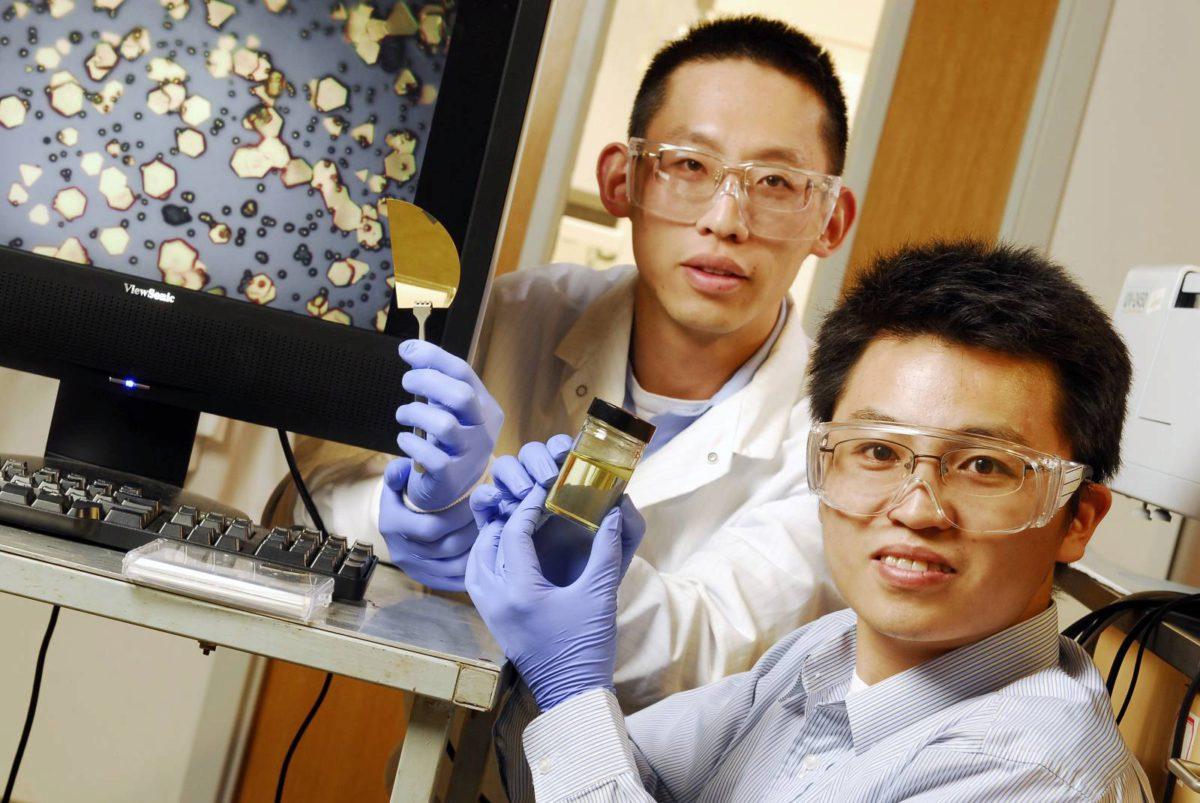
COE researchers at Georgia Tech have developed a new method to eliminate impurities in metals to be used in cancer therapeutics, microelectronics and other applications. Metals such as platinum and palladium are very important, but due to a limited supply, will need to be efficiently recycled. Existing recycling processes often dissolve metals together, which can cause impurities that may harm the efficiency of catalysts produced from the recycled materials.
The Team
The team, working under C.P. Wong, a Regents, professor at Georgia Tech, consists of five researchers all from the School of Materials Science and Engineering. “We need to be able to selectively dissolve these noble metals to ensure their purity in a variety of important applications,” said Wong, “Though we don’t fully understand how it works yet, we believe this system opens a lot of new possibilities for using these metals.”
Discovering the Solvent
The solvent was discovered by Wei Lin, a graduate research assistant in Wong’s laboratory, by accident in 2007. Lin was using thionyl chloride in an unrelated project that involved bonding carbon nanotubes to a gold substrate. “I left my sample in the solution and went to lunch,” he recalled. “Then I received a couple of phone calls and the sample stayed in the solution for too long. When I got it out, the gold was gone.”
Additional Uses
Beyond recycling, the new solvent could also provide new ways of producing nanometer-scale cancer chemotherapy agents that involve these metals. And the new solvent approach could have important implications for the electronics industry, which uses noble metals that must often be removed after specific processing steps. Beyond selectivity, the new approach also offers other advantages for electronics manufacturing – no potentially harmful contamination is left behind and processing is done under mild conditions.
“We have opened up a new approach to noble metals using organic chemistry,” Wong added. “We don’t yet thoroughly understand the mechanism by which this works, but we hope to develop a more complete understanding that may lead to additional applications.”
For more information, you can visit the original article at http://gtresearchnews.gatech.edu/recycling-noble-metals/.
